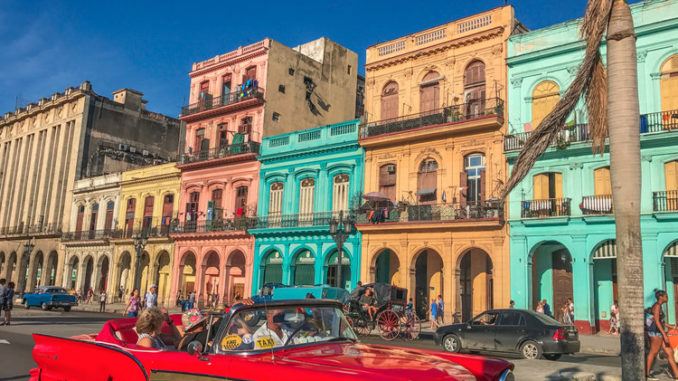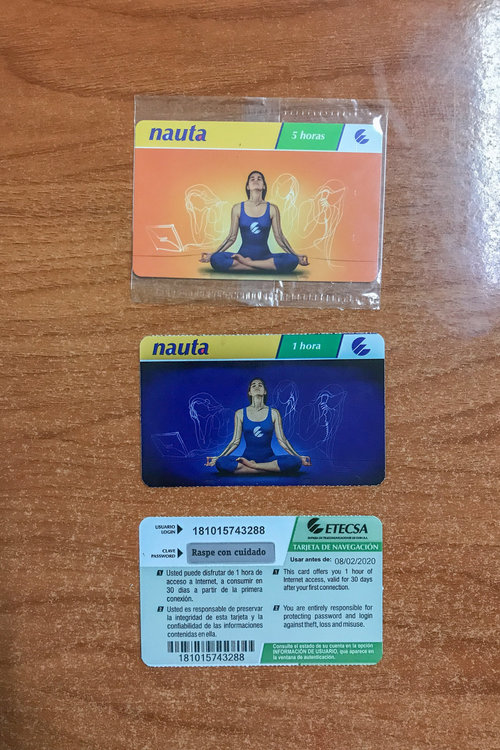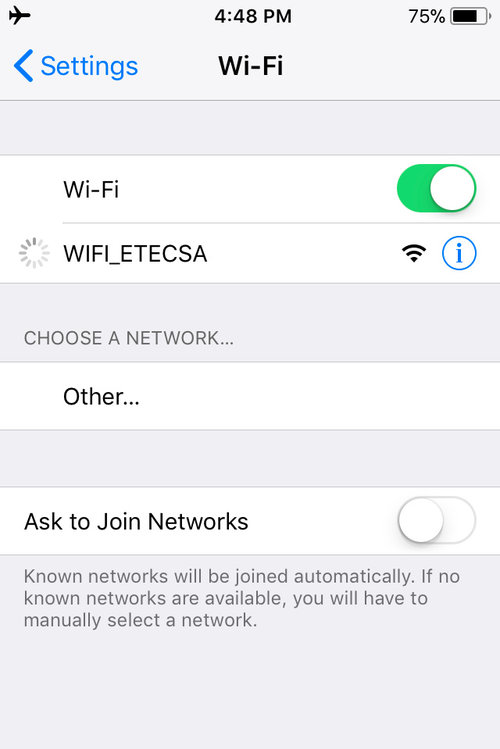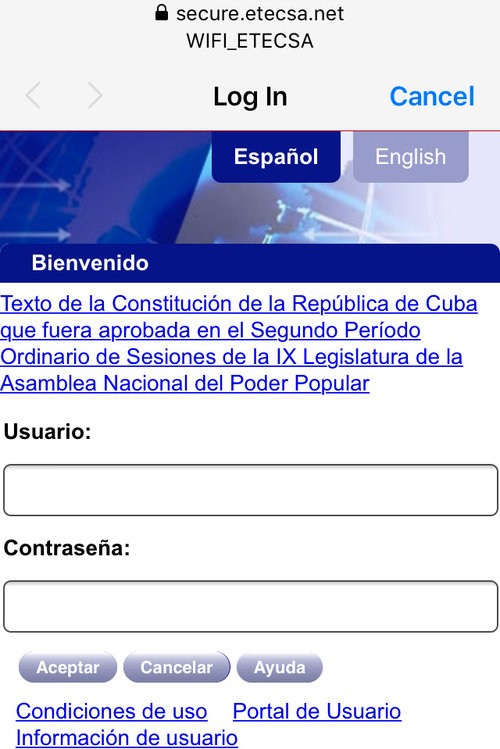
WiFi Access in Cuba in 2019
“Is there WiFi in Cuba?” is one of the most frequent questions I receive. Short answer: Yes, there is WiFi access in Cuba. Long answer: The Internet has existed in Cuba for well over a decade, just not in the form that most travelers are used to.
Your ability to connect to the WiFi in Cuba depends on a lot of factors and even if you can connect to the internet, it doesn’t mean that you’ll be able to access all your favorite websites and apps.
Since I lead group trips to Cuba and help people plan their own travels to Cuba, I spend a lot of time in the country and have used the internet (including my laptop and several smartphones) in every single province and have encountered every single Internet-related challenge imaginable.
Read on to learn what to expect when connecting (or attempting to connect) to WiFi in Cuba.
1. Internet access in Cuba is rapidly improving
As of December 1st, 2019, there are 986 WiFi hot spots across the country. Every year, new hot spots pop up, Internet speed improves, and the cost of connecting decreases. In 2017, Google servers went live in Cuba, making them the first foreign internet company to host content in Cuba. I still hear some travelers complain that they can’t jump on WiFi in every single cafe like in other countries, but know that Internet access has dramatically improved in recent years, we’ve all just been spoiled in other countries.
2. Connecting to WiFi in Cuba requires an Internet card
Unlike most countries, it’s not as simple as just connecting to an open network and entering the password. First, you need to buy a NAUTA scratch-off Internet card and then you can connect to the ETECSA WiFi network. ETECSA is Cuba’s telecommunications company.
Once you turn on WiFi, you’ll select the “ETECSA” network (there won’t be many to chose from) and a screen should pop up asking you to log in. This is where you’ll enter the usario (username) and contraseña (password) found on the back of the scratch-off Internet card. If your browser doesn’t pop up with the log-in screen, open the browser and type: “1.1.1.1”. If that doesn’t work, see #13 below.



3. There are four places to buy NAUTA Internet cards:
-
ETECSA office
This is the official way to buy a Nauta Internet card. You’ll need to show your passport and you’re limited to purchasing 3 NAUTA cards at a time. Expect to wait in a long line. Internet cards cost CUC$1 (about USD$1.20) for every hour of internet. 1-hour and 5-hour cards are the most common and they’re valid for 30 days. Most ETECSA offices are open from 8:30am-7pm but may run out of WiFi cards far sooner.
-
Hotels
All major hotels sell NAUTA cards that can connect to any ETECSA public WiFi hotspot (though the hotel may charge extra for the cards). You don’t necessarily have to be a guest at the hotel to buy an Internet card there. A handful of hotels, such as the Habana Libre, sell proprietary cards (about CUC$5/hour) that connect to the hotel’s own private WiFi.
-
At the park/square
There’s almost always someone walking around the park/square asking “WiFi? Internet”. These people are re-selling NAUTA cards at a premium, usually an extra 50 cents to $2. These cards are safe and will save you from waiting in long lines, just be sure to check that the password hasn’t been scratched off yet.
-
Businesses near the square
In some cities, like Baracoa, restaurants and shops surrounding the WiFi hotspot will sell NAUTA cards on the side. Some casa particular hosts also sell them. Ask around if the ETECSA office is closed.
4. Most Internet hotspots in Cuba are outside
The vast majority of Cubans and tourists connect to the internet at outdoor public WiFi hotspots. These are usually in popular public parks (parques), plazas, and busy promenades. Though hotel WiFi used to only be accessible from within the hotel, it’s now strong enough to catch from outside many large hotels.
It’s totally safe to connect to the Internet outside, just know it’s not a private connection so be careful when entering credit card info. Keep in mind that you may be standing in the hot sun (or in pouring rain, as I’ve had to do in order to make urgent trip arrangements for clients).
5. Know where to look for “wee-fee”
How can you find the nearest WiFi hotspot in Cuba? Some apps and websites (such as the ETECSA website) indicate where hotspots are but if you can’t access WiFi to begin with, how are you going to get to the online map? Ask your host (or any stranger on the street) where to find WiFi (pronounced “wee-fee” in Spanish) or stop wherever you see a large number of Cubans staring at their phones.
In Havana, most WiFi spots are in La Habana Vieja (Old Havana) and Vedado. In other cities, such as Viñales , Trinidad, Cienfuegos, Santiago, Holguin, Matanzas, Guantanamo, Varadero, and Baracoa, hotspots are usually scattered in a few central parks and plazas.
6. Yes, Facebook works in Cuba
Have no fear, you’ll be able to feed your social media addiction from within Cuba. Cubans love social media just as much as everyone else and you shouldn’t have any problems accessing Facebook, Instagram, or other social media platforms, they’ll just be slower.
7. Internet access in Cuba is fast…enough
The signal strength has improved dramatically, as video calls were impossible just a couple years ago, but don’t expect the same speed you get in the United States or Canada. Video calls are now possible but the signal can sometimes be too weak even for regular internet browsing. I prefer WhatsApp and iChat for communications in Cuba but you can also use Skype, IMO, GoogleTalk, and Facebook Messenger.
Live streaming is typically not possible, though I was able to do a couple Instagram lives in Baracoa (Guantanamo) and in Havana recently.

The illegal, almost universally condemned Us blokade affects everything including communications.
Until about 6 or 7 years ago the wire/cable routes were few, incredibly slow, circuitous and services very expensive up to 10Cu/hr, Then fibre-optic cavle was laid to Venezuela and Jamaica. The net capacity improved incredibly, price came down more than 500%, speeds improved drastically and more and more hotspots have become available. For instancehere are many outside the tourist area of Havana. Also in the small towns like Chivirico on the gorgeous Caribbean coast 60 miles to the west of Santiago towards Marea Del Portillo. Our friends are announcing that for a year or so with cable infrastructure improving by leaps and bounds more and more Cubans. are getting Wi-Fi established in their homes. Every town no matter how small has Computer Clubs where anyone can go to use the net. Like many things in Cuba, big changes can occurr overnight! I find many Cubans know far more about the world than typical Canadians.
I have visited Cuba probably 60 or more times over 27 years from Cabo San Antonio to Cabo Cruz, Cayo Largo to the Jardines del Rey. Too bad the US spends about 25-30Million directly on lying and misinformation campaigns about a country which should be the model for most of the 3rd world